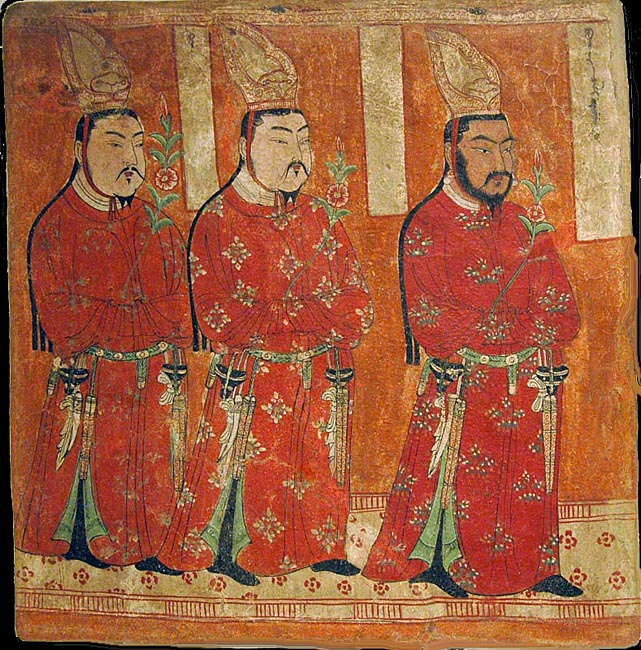
Berlin
Dahlem
Serindia
Section of the Museum of Indian Art
The Treasures of Albert von Le Coq's Expeditions
Long before Bosch I have been fascinated by the Buddhist murals of Chinese Turkestan (Serindia, Xinjiang) from the cave monasteries along the Silkroads circling the fringes of the Taklamakan desert: Kizil, Kumtura, Khocho. Turfan and Dunhuang. In 1983 I succeeded to get as far as Dunhuang; Xinjiang was closed to singly traveling foreigners.
The largest collection of artifacts from these parts are in Berlin-Dahlem. These fragments of murals - 360 kg brutally cut from the cave walls - sculptures, and Manichean manuscripts were brough to Berlin by Albert von LeCoq and Albert Grünwedel from a series of expeditions between 1902 and 1911. The Berlin Museum of Indian Art was badly mauled by Allied airraids. After WW II the surviving pieces were moved to Dahlem, where I visited them twice before 2001. Newly renovated the Dahlem museum has become one of the most beautiful exhibition spaces of its kind.

Caves of Bezeklik, Mural, Uighur Princes as Donors, 8th cent
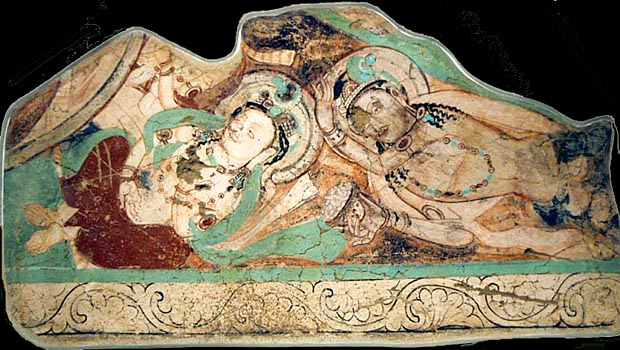
Caves of Kumtura, Mural, two Hinyana Deities, 6-7th cent
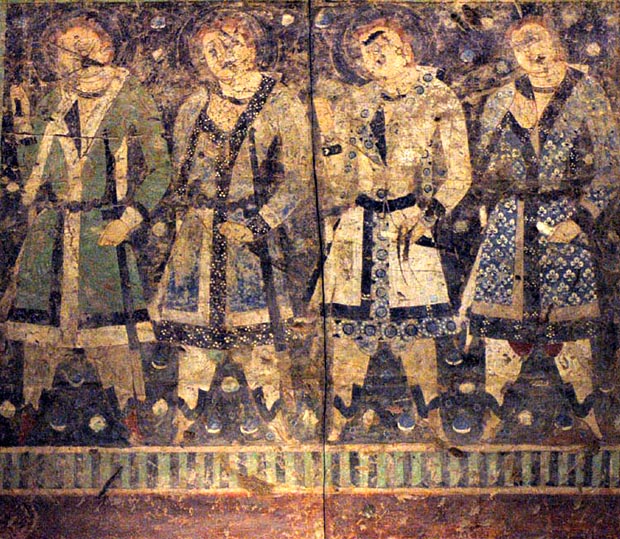
Caves of Kizil, Mural, Tokharian Warriors, 6th cent
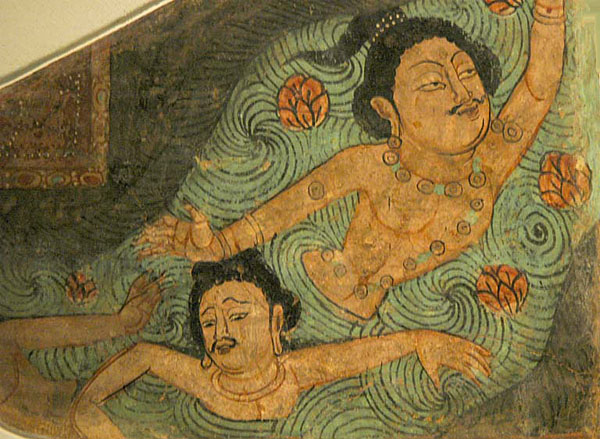
Kizil, Mural Gragment from the Swimmer's Cave, 7th cent
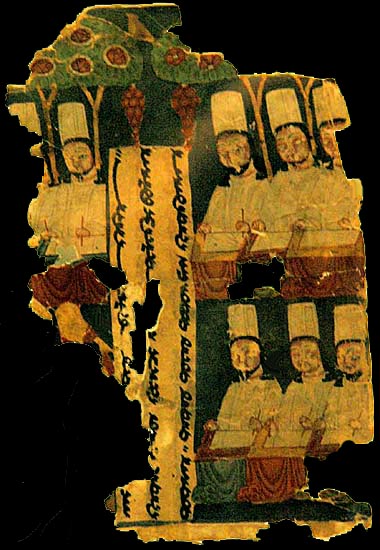
Khocho,
Fragment of a Manichean Manuscript, 8th cent
Photo from
“Silkroads”, U. of Washington, WA
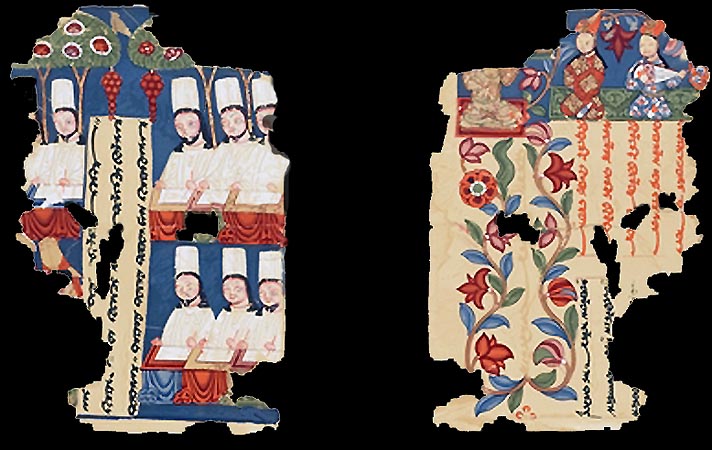
Khocho, another reproduction of the same fragment
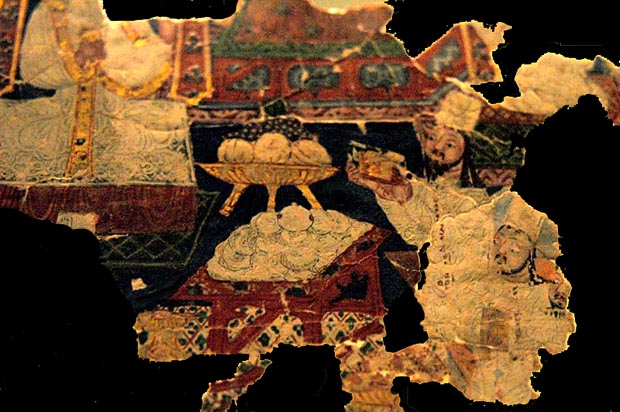
Khocho, Fragment of a Manichean Manuscript, 8th cent
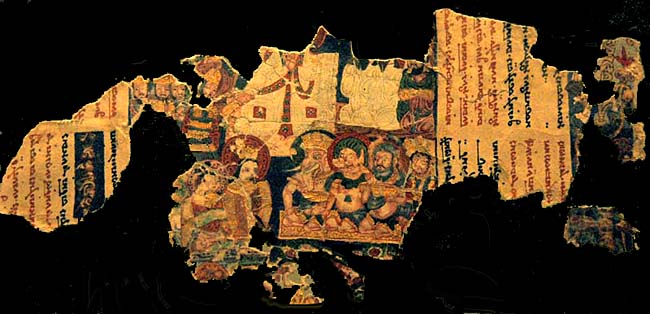
Khocho, Fragment of a Manichean Manuscript, 8th cent